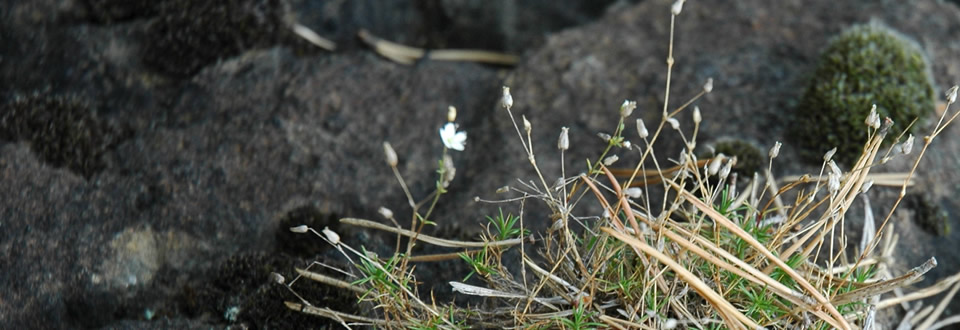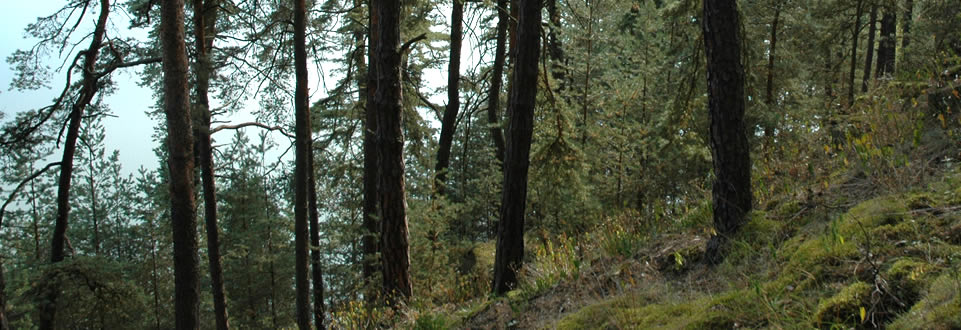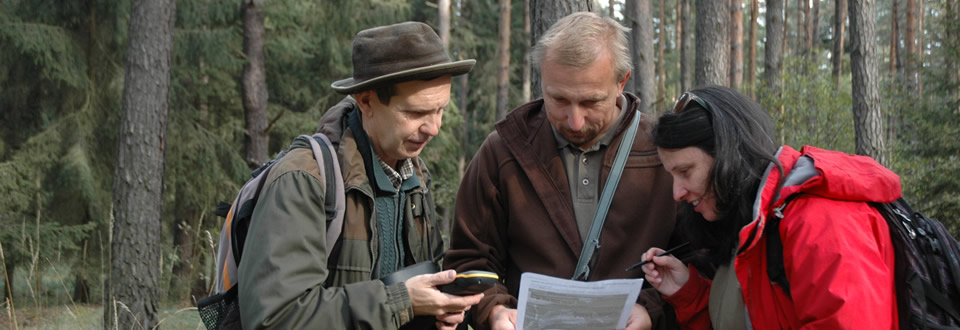Suppression of competitively strong plants
Minuartia smejkalii and other serpentine species are competitively weak and are thus very quickly overgrown by other vegetation. Maintenance of sites with low cover of vegetation is thus key factor for their survival.
a) Mowing: Mowing was introduced in parts of Želivka SCI to suppress dominant grasses (Calamagrostis epigejos and C.arundinacea). Mowing was carried out 2 times per year on the area 6.2 ha in Central part and 0.3 ha in B2 part. Additional 5 ha was mowed three times per year for 4 year as a substitutive management for grazing. All biomas was removed from the sites.
b) Manual removal of expansive plants: On parts inaccessible to machinery competitors were removed manually. Specifically, Vincetoxicum hirundinaria was removed on area 0.2 ha in part DK1; mosses, grasses and bunches of Sarothamus scoparius were removed on area 0.08 ha in parts B1, B2 and DK3 and Frangula alnus was removed on area 11.3 ha in Central part. Manual removal of expansive plants was thus implemented on 11.58 ha in total.
c) Grazing: Grazing was introduced to the Central part of Želivka SCI in September 2019. Grazing is implemented twice per year by the herd of 30 sheep.
d) Suppression of Calamagrostis epigejos by sowing of Rhinanthus alectorolophus. Rhinanthus is hemi-parasitic plant species, which parazities on species from family Poaceae and thus decrease their growth. If Rhinanthus has not suitable host plant, it disapears from locality. R. alectorolophus was sown firstly to the boundary of Želivka SCI to test its possibility to grow in serpentine. The species germinated and grown very well. We thus decided to sow it to three patches in Central part. Nevertheless, R. alectorolophus had very low germination and did not grow there. The reason was probably that the sites were for this species too shaded.
Results
This action let to suppression of grasses such as Calamagrostis arundinacea, Poa pratensis or Molinia aundinacea. In contrary, Calamagrostis epigejos was not suppressed because its spreading was supported by tree cutting and enhancement of canopy openness. Serpentine species including M. smejkalii were supported by management interventions and enhance its coverage.








